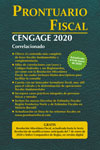Este artículo fue publicado en: enero 4, 2016
The sound of activity echoes throughout the classroom. I find myself engaged in a small-group conversation around the igneous rocks that the students in this group are holding. Remembering that shortly before that conversation I’d been about to redirect some students, I quickly scan the room searching for off-task behavior. To my delight, I find that a wide array of learning is taking place. In one corner, I see students watching a video and typing online reflections. In the other corner, I see students comparing their drawings on the rock cycle. This is what a good day built on learning centers looks like.
As teachers strive to find ways of promoting key success skills while making use of limited resources, learning centers can be an invaluable tool in the secondary classroom. In addition, learning centers provide time-strapped teachers with opportunities for meaningful formative assessment that helps drive the classroom instruction. What are some strategies that secondary teachers can use to successfully launch learning centers in their classrooms?
Use a Roadmap
Índice
Developing a one-page roadmap that outlines the station progression is a must. My co-teachers Bob Wandel and Nate Alkire have found that including a «check-off» space for a teacher signature or stamp of approval brings higher levels of accountability. In fact, our middle school students love the traditional stamp or sticker. In addition, we include items such as learning target questions or need to knows if we are in the middle of a project.
Diversify the Experience
Here is your chance to try a variety of methods for helping students uncover the critical content that your learning centers are geared toward. Feel confident in trying different activities, labs, and experiences that you typically have shied away from. Think about how you can add drawing, technology, physical movement, reading, reflecting, observing, graphing, etc. In addition to finding a variety of methods, feel free to diversify where the experience is taking place as well. The bottom line is that many students like learning in different ways, and teachers like safe environments to try new things.
Te puede interesar
 Prontuario Fiscal 2020
Prontuario Fiscal 2020Ir al Prontuario Fiscal 2021 -> En 2020 entrarán en vigor nuevas y numerosas disposiciones fiscales en materias tan importantes...
Leverage Your Resources
As teachers bring authenticity into the classroom, the resources and materials needed become more complex and thus more expensive. Learning centers can ease some of the financial concerns by integrating a lab experience as a center. For example, a teacher may not have enough stereo microscopes in the classroom for each pair of students. By creating a station or two that uses the microscopes, momentum can be maintained. In other situations, limiting the amount of resources can lessen the burden on the teacher. For example, instead of having eight paint stations set up around the room, a single station can eliminate a big mess! In these situations, the cleanup and setup times are reduced, freeing up precious time to meet the demands of the day.
Build in Wild Card Time
Building a culture of voice and choice while providing opportunities to develop self-management skills doesn’t happen overnight. By building in wild card time, you allow for students to manage relevant items related to the learning centers. In all situations, wild card time can provide the structure to support the students who want a little more and those who need to catch up. In cases where learning centers are in the middle of a project, wild card time can provide students a valuable opportunity to build their ideas based on what they are learning in the centers. Sometimes the management of project-based learning requires the space for students to carry out simple tasks like email or phone calls.
Carry a Clipboard
Sometimes simplicity is the best option! Carry a clipboard with the class list formatted in a spreadsheet. Using this spreadsheet, you have your own record of which student is meeting your expectations and who needs extra help. As formative assessment takes place, quickly document with simple checkmarks. This documentation can provide really important data and information that will inform your next steps.
Search Out One-on-One Conversations
One of the hidden secrets of learning centers is your ability to have the critical one-on-one conversations that our middle and high school students need. Relationships are incredibly important, and we need to find ways that will allow for them to happen. By building in opportunities for more meaningful conversations, we can gain a better understanding of our students in the context of our classroom. Sometimes the simple conversation is what moves the student forward.
Te puede interesar
 Cálculo de Una Variable: Trascendentes Tempranas
Cálculo de Una Variable: Trascendentes TempranasEl estudio del cálculo ayuda a los estudiantes a comprender la disciplina de manera práctica. El modo más importante de...
The possibilities are endless when we continue to build ideas and structures that support high-quality teaching and learning. Learning centers are a tool that we can all leverage. What are some learning center strategies that you can share?
See original text: http://goo.gl/Wa4aak
Te puede interesar
 Principios de economía
Principios de economía¿Por qué debería usted estudiar economía? La razón es sencilla: le ayudará a comprender el mundo en que vive. Existen...






